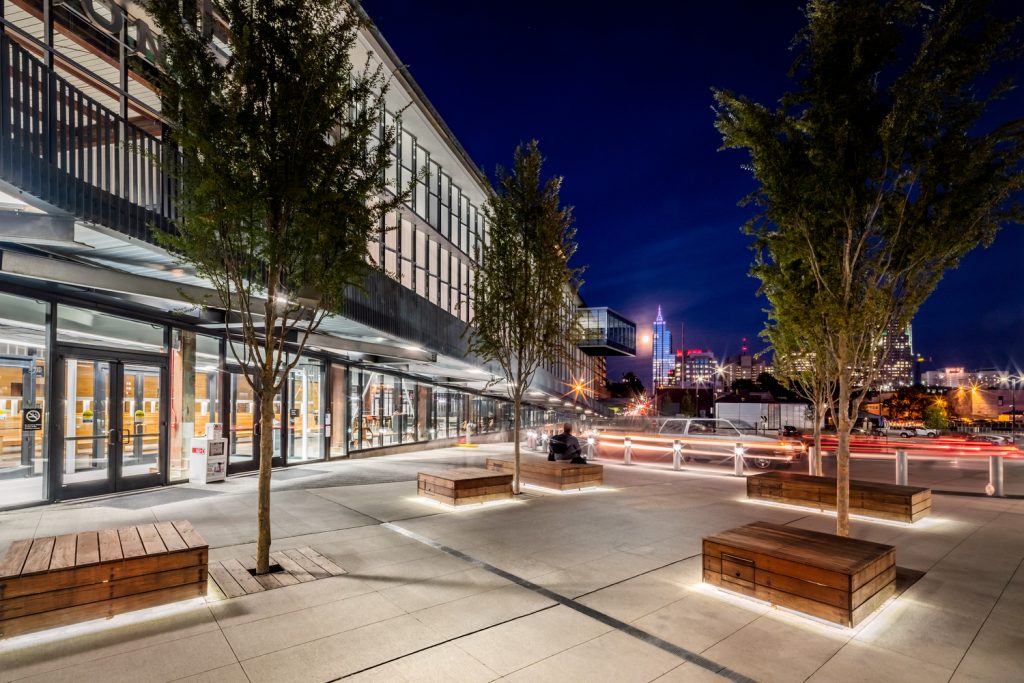The American Society of Landscape Architects, Southern Region recognized three Surface 678 projects with design excellence awards at a ceremony held on June 3 during the Leading Transformations Conference in Greenville, South Carolina. Barrett Armstrong chaired a jury that chose the winning work from entries submitted by firms in Alabama, Florida, Georgia, Kentucky, Louisiana, Mississippi, North Carolina, South Carolina, Tennessee, Virginia and West Virginia. Surface 678’s recognized projects are pictured above from top left:
Honor Award, Market & Exchange Plazas
Restoring health and vibrancy to two underutilized spaces in the heart of downtown Raleigh, the plazas’ redesign posed unique challenges for visitor flow, security and integration into the urban fabric. Envisioned as a social hub of urban life, the plazas represent the convergence of a diverse community accommodating varying multi-cultural and intergenerational uses with flexible gathering spaces.
Merit Award, Horseshoe Farm Nature Preserve
Sitting majestically above a dramatic oxbow adjacent to the Neuse River, Horseshoe Farm Nature Preserve is a showcase of low-impact park development and best management practices. Initial programming included athletic facilities, but after an extensive natural resource study the design team and community environmentalists campaigned to preserve the site and restore a diverse ecosystem. The 146-acre former farm does not link to existing city infrastructure and is served by green alternative energy systems, a composting comfort station and on-site water sources intended to highlight the potential for low-impact development and provide unique opportunities for interpretation and demonstration. The soft surface walking trails connect to the Neuse River Greenway and the Preserve serves as a trail head.
Recognition Award, Raleigh Union Station
Centrally located in downtown Raleigh’s historic Warehouse District, Raleigh Union Station is a partnership between the City of Raleigh and the NC Department of Transportation (NCDOT), to accommodate current and future multimodal demand. The project symbolizes the transition between the old downtown of Fayetteville Street into the newer downtown of Glenwood South and the Warehouse District, shifting the core of downtown and spurring transit-oriented development.

